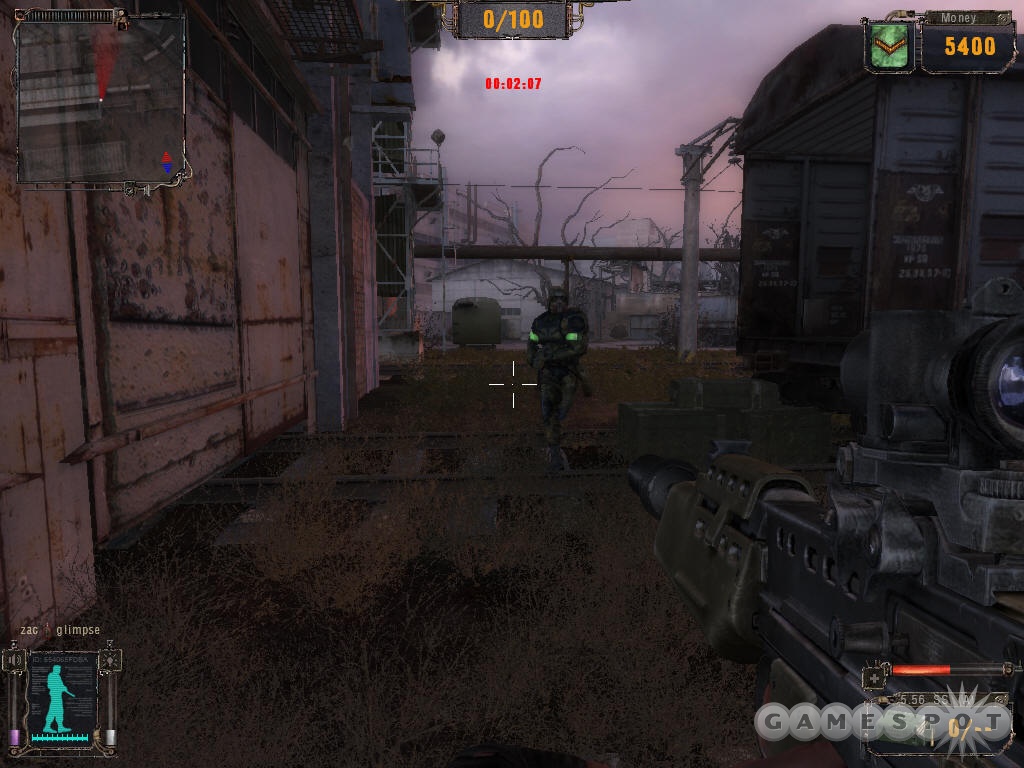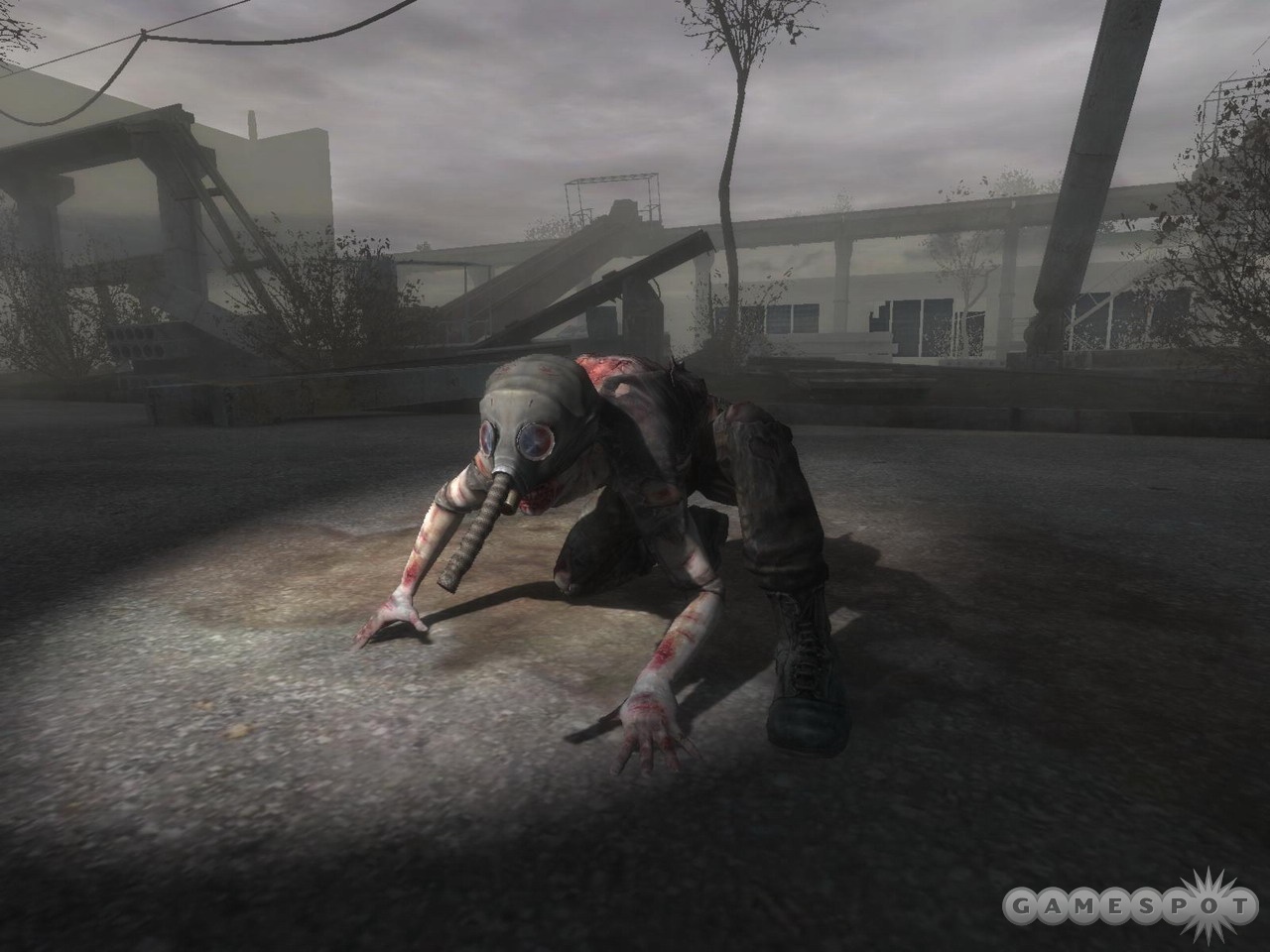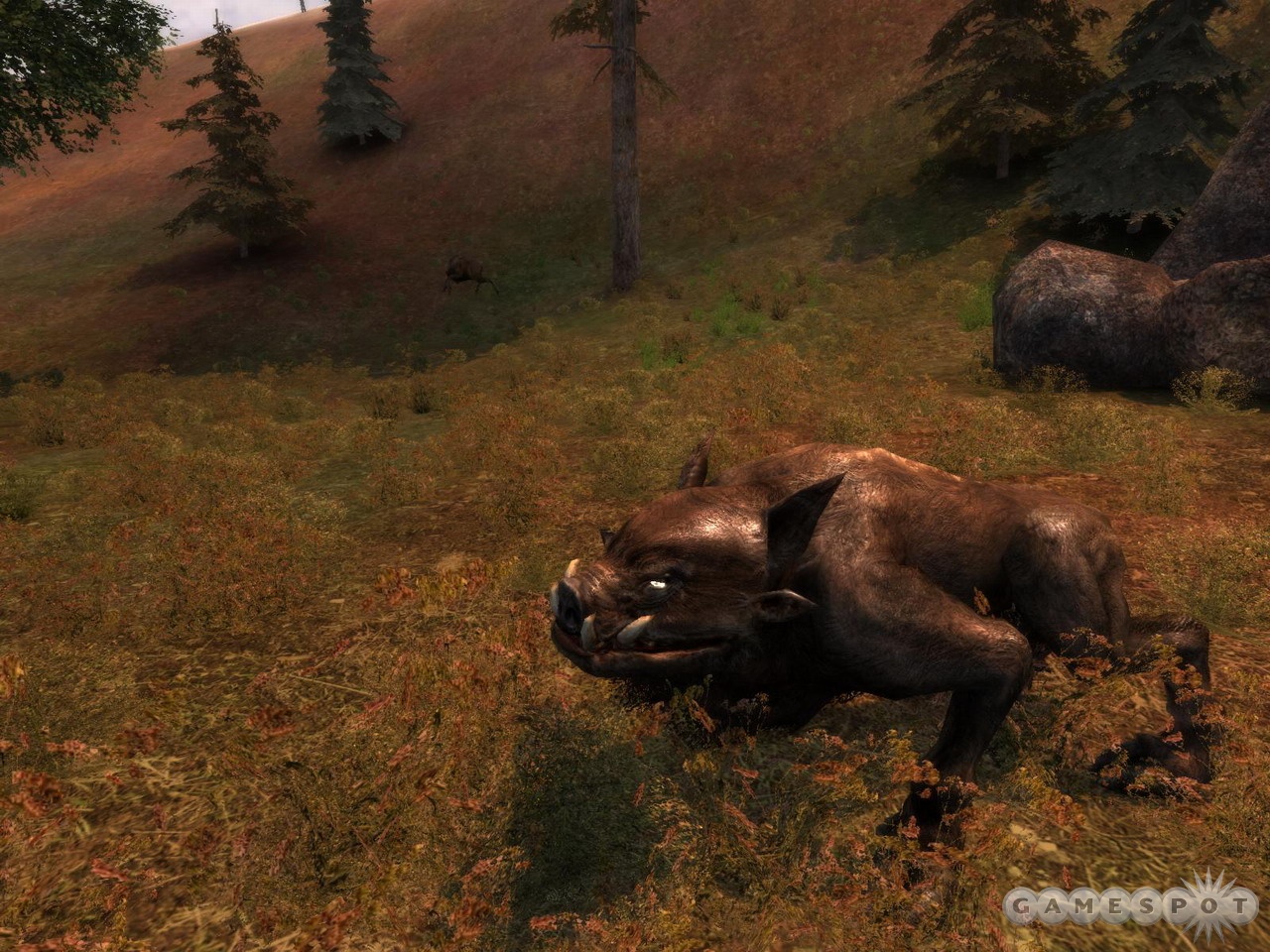S.T.A.L.K.E.R.: Shadow of Chernobyl Multiplayer Hands-On and Q&A - Factions, AI, and Enemies
We test drive S.T.A.L.K.E.R.'s multiplayer modes, and then catch up with some of the designers to learn more about the game's impressive AI.
Survival gameplay and first-person action will blend together in S.T.A.L.K.E.R.: Shadow of Chernobyl, the long-awaited game from THQ and GSC Game World. When it finally ships next month, S.T.A.L.KE.R. will have two halves. There's the ambitious single-player game that will put you in the midst of the exclusion zone that surrounds the infamous Chernobyl nuclear reactor. Then there's the multiplayer game that will let you run-and-gun online with and against other players.
We had a chance to check out the multiplayer beta test going on right now, and the multiplayer is going for a more traditional run-and-gun style of action that shooter fans are familiar with. The three modes in the beta are deathmatch, team deathmatch, and artifact hunt, which is basically a variation of the popular capture-the-flag mode.

The environments in multiplayer are incredibly detailed. The graphics engine isn't as cutting-edge as some seen in newer games, but GSC Game World has managed to turn that into a plus. There's a lot more geometry and objects in each level, and this translates into more interesting battlefields. There are plenty of wide-open spaces, as well as confined areas for close-quarters combat. Another nice touch in multiplayer is the atmospheric effects. During a battle the weather will change from sunny to overcast, at which time lightning bolts will brightly illuminate the darkness, and then the sun will appear again.
You won't have an unlimited amount of weapons and ammunition at your disposal, either, as the multiplayer portion of the game borrows some of the scavenging concepts from the single-player game. There's an economy in multiplayer. You'll start out with a decent amount of cash, which you can use to buy more powerful weapons (you start with just a pistol), body armor, and equipment, such as night-vision goggles and med kits. You earn money for kills, but if you're killed, you'll respawn with none of your gear left, which means that you must dip into your cash reserves. But if you're short of cash, you'll have to either recover a weapon from a fallen player or wait until you earn enough money to outfit again.
Most of the gear in the game looks as if it's taken from the real world. There are many varieties of Kalashnikov assault rifles, as well as some Western arms. There are pistols, shotguns, submachine guns, assault rifles, and yes, sniper rifles. The ballistic model in the game feels right, in that firing a burst from an assault rifle results in a spray of fire, as the recoil affects the accuracy of each successive shot. Meanwhile, the sniper rifle is more than capable of delivering accurate headshots, as we discovered the hard way over and over again. One of the neat aspects of the game is how it seems to model the movement of your legs. Circle strafing, or running sideways in a circle around someone, is almost impossible because any kind of lateral movement slows you down. Meanwhile, backpedaling is also a lot slower than moving forward. It's a little thing, but it adds a realistic touch to the action.
If you don't want to play against other players online, you can dive into the single-player game, though don't expect a lot of mercy there. In S.T.A.L.K.E.R.'s universe, the exclusion zone around Chernobyl has become a hotbed of activity. Strange mutant creatures and much worse inhabit the zone, while stalkers (heavily armed scavengers) roam about battling one another for valuable artifacts. One of the impressive aspects of the game is the detailed behavior modeling and artificial intelligence in the game, and we caught up with AI programmer Dmitry Yasenev and gameplay designer Ruslan Didenko for more details.
GameSpot: Tell us about the five factions in the game and the roles they will play. How will they be more than simply good-or-evil, black-and-white groups that influence players' actions?

Dmitry Yasenev and Ruslan Didenko: The factions are Duty, Monolith, Mercenaries, Freedom, and Bandits. Each faction possesses its own ideology which determines the basic relations among them. For example, the Duty faction consists of ex-military who went into the zone to fight the perils there. They believe it a duty to protect the world from mutant invasion and hence fight against any zone traces. Meanwhile, the Freedom faction consists of anarchists fighting for information about the zone. They openly oppose the military and want to prevent the government from fully controlling the zone. They believe the zone is an ex-military test ground for Third World War weapons and that what happens in the zone must be widely known.
The factions have well-protected bases in the zone, where they have their leaders, plenty of guards, equipment, and ammunition. All the factions fight one another, and the player may become involved in this conflict.
Mutants and Zombies
GS: Obviously, players will be able to make enemies by attacking other factions, but how do players join the different factions in the game? Is it possible to increase or decrease your standing with a certain faction, and if so, how? 
DY and RD: There are two levels of relationships when it comes to the player and the factions. The first is the player's relationship with individual of that faction, and the second is the attitude of the entire faction. On the individual level, the player may interact with a certain stalker by communicating, trading, fighting, and so on. If you make a mess of the relations with a single stalker, you will not necessarily become an enemy of his entire faction. To do that you'd need to commit to something much more evil, such as attacking a faction's outpost or killing a number of its members.
GS: What benefits will players get for joining certain factions? For instance, if you join the Duty faction, will you get access to better equipment, or if you join the stalkers, will you get better selling prices for your wares?
DY and RD: The neutral factions will provide the player with random tasks. Cooperating with factions will gain you access to unique weapons and gear, as well as considerable discounts at a faction-friendly dealer.
GS: Tell us about the mutant creatures that players will face in the game. Just how many kinds of different mutant creatures will players encounter?
DY and RD: The game has about a dozen different monster types. Most of these have different subspecies, which have different looks.
GS: Are all the mutant creatures in the game a result of nuclear fallout, or are there some that were perhaps the result of some Chernobyl-era experimentation? What are their motivations? Will they all be hostile?
DY and RD: Monsters are divided into three categories: mutated animals, mutated humans, and creatures that have appeared after some eerie events in the zone.
The key behavior built into monsters is the self-preserving instinct. Monsters act in accordance with their instincts, being guided by this paramount goal of avoiding danger. Hence, the level of aggression of some monsters is fairly low in the game. Unless you go attacking them, they would rather avoid the combat than engage in it. But if monsters feel strong enough to beat the player, they will attack.
GS: Many of the creatures we've seen so far seem like mindless animals, charging at players and trying to bite or claw them. Will all creatures in the game simply be dumb beasts, or will they have different abilities or smarter AI? Give us some examples.
DY and RD: In addition to aggression, monsters can show individual abilities, peculiarities, and tricks. In battle you can observe when monsters get scared and start running away, only to return once their morale is restored. A certain category of monsters in S.T.A.L.K.E.R. were given abnormal abilities--telekinesis, telepathy, invisibility--turning them into very nonstandard opponents. For instance, when fighting an invisible poltergeist, you will first have to cope with boxes, crates, furniture, and whatever other objects it grabs and hurls at your face. Meanwhile, the controller enemy, using his abilities of telepathy and mental control, prefers to act from the distance by inflicting psionic attacks or sending zombies the player's way.
GS: We understand that in certain missions, players will actually be joined by AI characters who will fight by their side. How skilled will teammates be in battle? Will they be hesitant to enter dangerous areas, or will they suffer morale problems and flee battle if they're too badly injured?

DY and RD: We aimed to approximate the AI's behavior to something real humans would do. As a result, in the company of AI characters you can see them showing caution, choosing cover, firing from behind the cover, and then hiding back to reload. If an AI loses sight of his opponent, he comes out and tries to hunt him, and when finding an injured enemy he will finish him, but not without first uttering something rude in Russian.
Aside from the sheer abilities, the effectiveness of your teammate's actions will hugely depend on his rank and equipment: thus, rookies in the battle are far less effective than veterans. So, watch who you take with you when going into battle. Generally speaking, the behavior of computer stalkers in battle can be described as, "Nobody here wants to die, each one values his own life."
GS: Thank you, guys.
Got a news tip or want to contact us directly? Email news@gamespot.com
Join the conversation